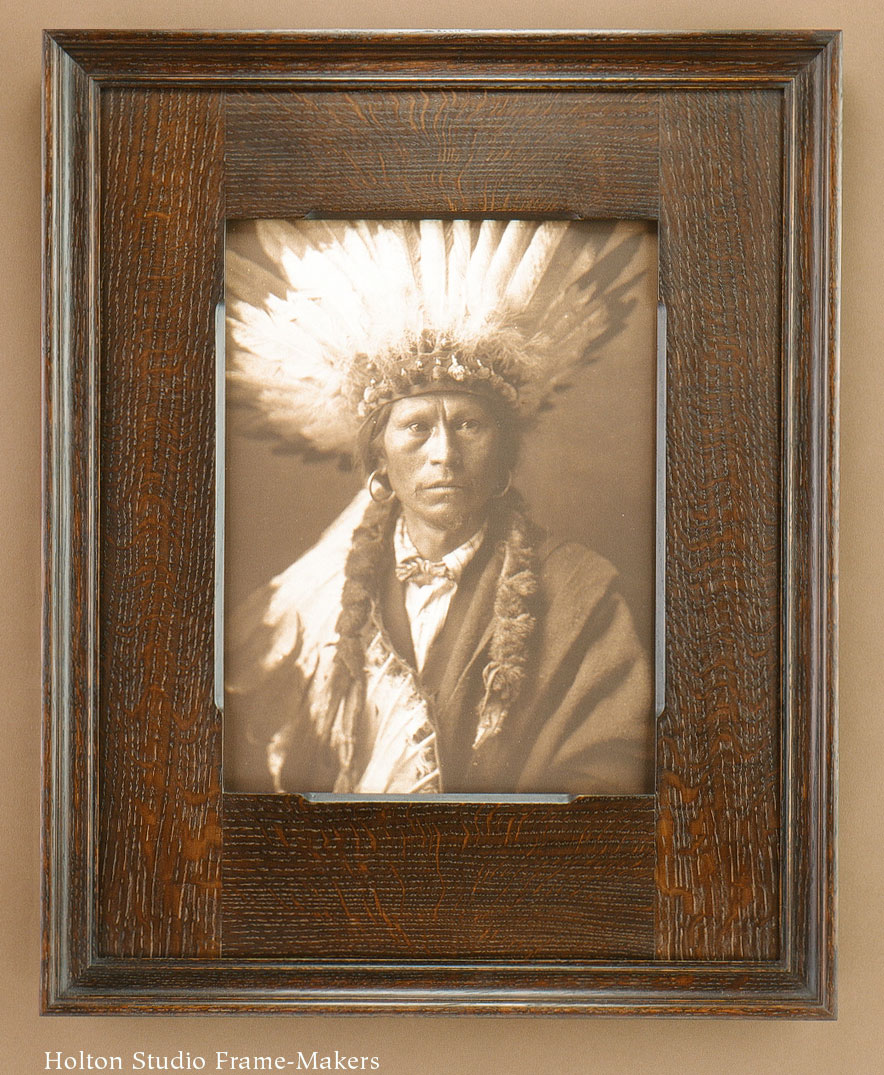1904 (1980’s restrike). Photogravure, 22″ x 18″. Framed in No. 348—1-1/2″ on chamfered flat, in quartersawn white oak (Medieval Oak stain).
We admire the tendency at the turn of the last century to frame pictures close — i.e., without a mat — in wide oak frames. It’s a direct and simple approach inspired by medieval pictures and their integral frames. Nowadays, though, we have archival concerns our forebears didn’t share: we don’t trim pictures that have value; we separate them from the glass to keep condensation from coming in contact with the artwork; and we isolate pictures from the acids in the wooden frame. But this example shows how we’ve been able to capture the direct simplicity of period framing while meeting today’s archival standards.
This extraordinary image of Chief Garfield, by Edward S. Curtis (a restrike, but still valuable), we put under a wooden lap-joined flat covering the margins of the picture and coming right up to the image, and then set it in an outer mitered frame. A mat is hidden under the flat to separate the glass from the picture, and the glass goes out to the outer frame insulating the “package” of glass, mat and backing from the flat.
The flat is chamfered to help focus the eye on the picture. The outer frame is a mitered scoop with a bead — the No. 348. We chose it for its strength of line and grace of form which harmonized with the head dress.
